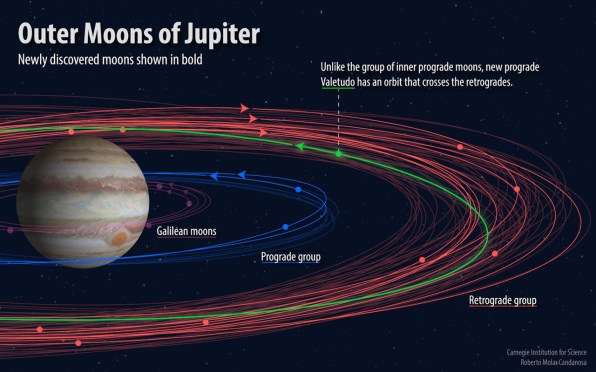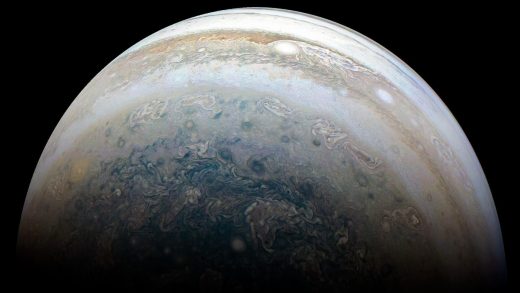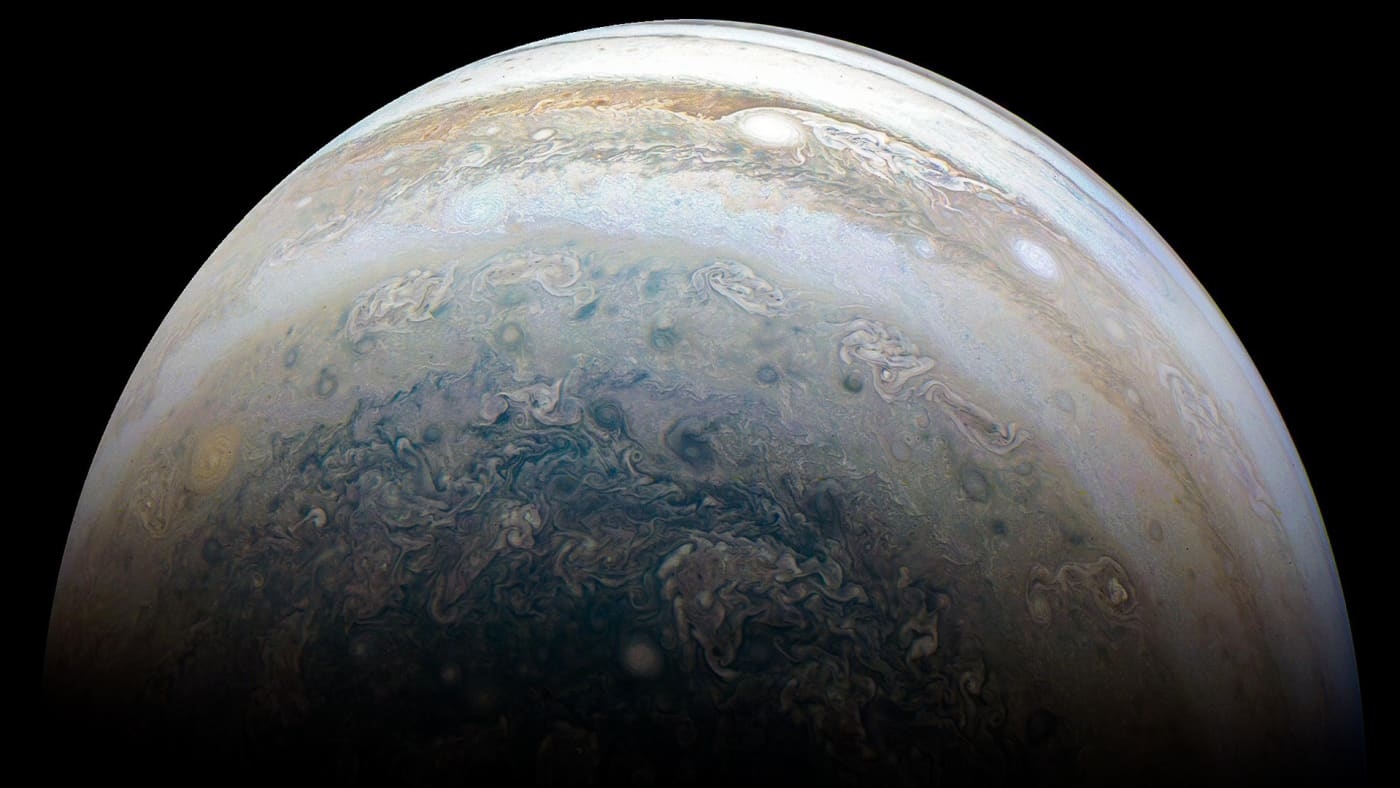Jupiter has an “oddball” moon and we can relate
Astronomers have discovered 12 new moons orbiting Jupiter, including one that the scientists intergalactic bullies at Carnegie are calling an “oddball.” What did it do, eat paste while they were watching through their powerful 6.5-meter Magellan telescope?
We reached out to Carnegie Institution for Science Professor Scott S. Sheppard to ask about the “oddball” description. He explained that the institution had named the moon Valetudo, and while that may sound like Latin for Mommy’s Special Little Boy, it’s really the Roman god Jupiter’s great-granddaughter. Valetudo is the goddess of health and hygiene, which cannot help with this little oddball moon’s self-confidence.

According to Shepard, Valetudo is “a real oddball” that is taking its own path. Not only is it the smallest of Jupiter’s 79 known moons—at less than a kilometer in diameter—but it has a very unusual orbit. It is more distant (for good reason!), more inclined, takes longer to orbit Jupiter than its siblings, and crosses the outer retrograde moons. This individualistic path could lead to more head-on collisions between the “oddball” prograde and the retrograde moons, which are moving in opposite directions.
“Valetudo is like driving down the highway on the wrong side of the road,” Sheppard wrote in an email to Fast Company. “That is, it is moving prograde while all the other objects at a similar distance from Jupiter are moving retrograde. Thus head-on collisions are likely.”
Why are this little moon and its “normal” siblings so important? Because they are most likely clues to the origins of the planet itself. “Most of the small objects that helped build the planets we see today were incorporated into the planets themselves, and these moons are all that remains,” Sheppard wrote. “So understanding these moons helps us understand what the planets were originally made from. We think they are likely intermediate between the rocky main belt asteroids and the icy distant comets. These moons are likely half ice and half rock.”
The team’s discovery brings Jupiter’s total number of known moons to 79, more than any other planet in the Solar System. But it’s the one little oddball that has won our hearts.
(19)



